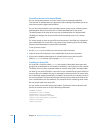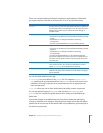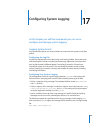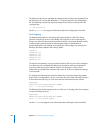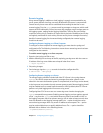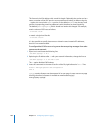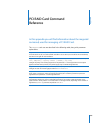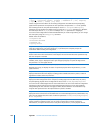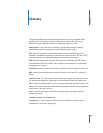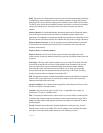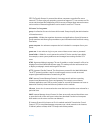
284 Chapter 17 Configuring System Logging
This format is the IPv4 address with a mask bit length. Optionally, the service can be a
name or number of the UDP port the source packet must belong to. When using the
-a option, do not omit the masklen portion, as the default masklen may be very small
and the corresponding matching addresses could, therefore, be almost anything.
The default [:
service] is syslog, which should not need to be changed. For example,
match a subnet of 255 hosts as follows:
-a 192.168.1.0/24
or match a single host like this:
-a 192.168.1.23/32
It is also possible to specify host names or domain names instead of IP addresses,
but this is not recommended.
To configure Mac OS X Server as a log server that accepts log messages from other
systems on the network:
1 Open /etc/rc and locate the following line:
/usr/sbin/syslogd -s -m 0
2 Replacing the IP address after -a with your network information, change the line to:
/usr/sbin/syslogd -n -a 192.168.1.0/24
The -n option disables DNS lookups.
3 Insert this command as the next to last line of the file, right before the “exit 0” line:
killall -HUP syslogd #re-load configuration
exit 0
syslogd
contains features not documented in its man page. A more recent man page
that fully describes its features is available at www.freebsd.org/cgi/
man.cgi?query=syslogd.



